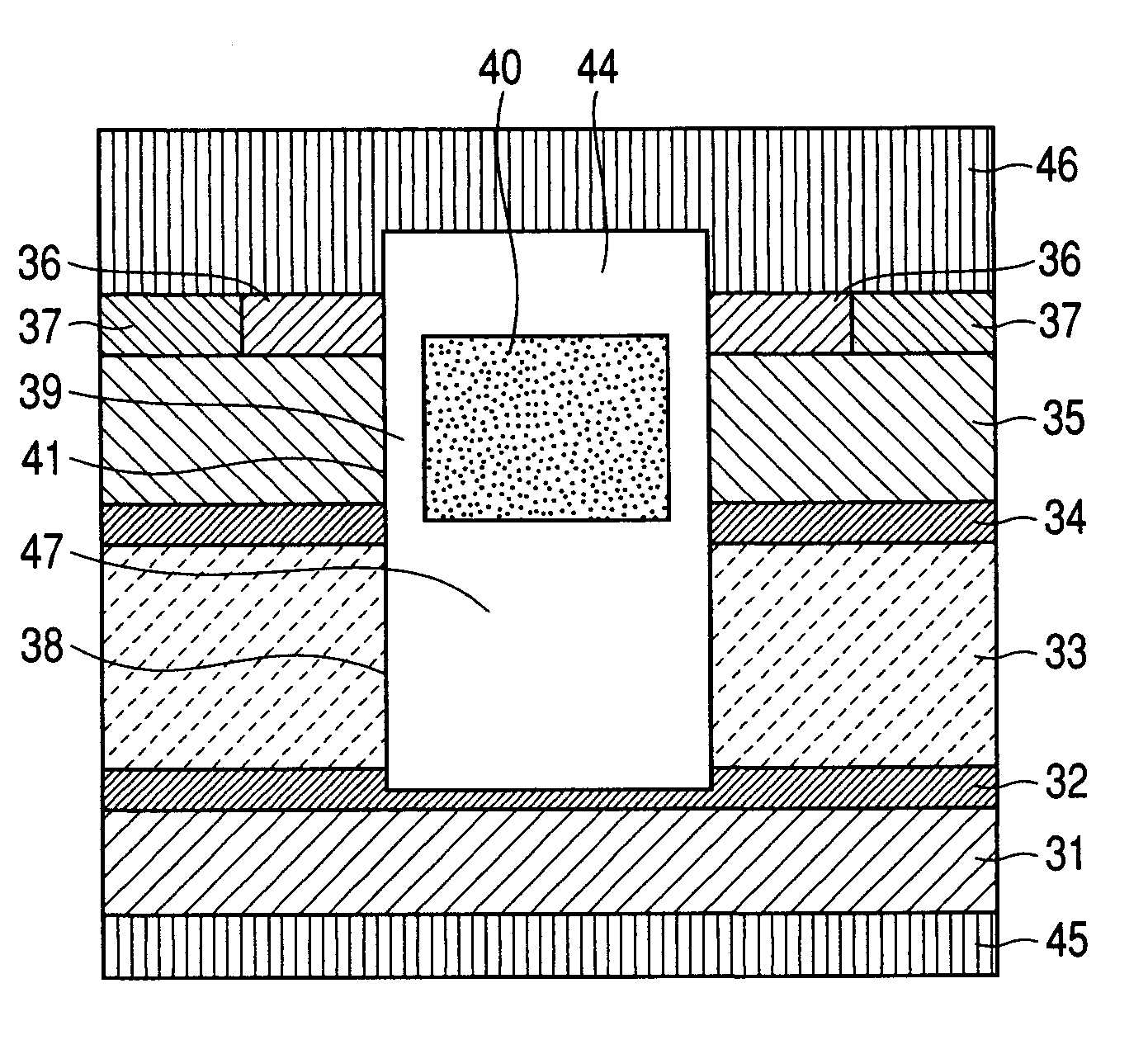Silicon carbide semiconductor device and manufacturing method thereof
- Summary
- Abstract
- Description
- Claims
- Application Information
AI Technical Summary
Benefits of technology
Problems solved by technology
Method used
Image
Examples
example 1
[0046]In Example 1, the manufacturing method of an n-type SiC-MOS capacitor according to the invention will be explained. Change in conduction type allows a p-type SiC-MOS capacitor to be manufactured in the same way as that in Example 1 explained below. Furthermore, by forming parts such as a drain, a source electrode and a gate electrode with a publicly known method, a device such as an n-channel or a p-channel MOSFET can be easily manufactured.
[0047]First, an alumina boat is prepared. Upstream from the boat, a SiC dummy substrate (which is not necessarily a single crystal) is disposed on which a 5 mm thick SiO2 has been deposited. The width of the dummy substrate sample to a gas flow is taken as at least wider than the width (50.8 mm in diameter) of a later described SiC substrate sample to be originally processed, 55 mm square, for example. Downstream from the boat, the SiC substrate sample is disposed for manufacturing the n-type SiC-MOS capacitor according to the invention.
[00...
example 2
[0058]In Example 2, a manufacturing method of an n-type SiC-MOS capacitor according to the invention will be also explained. As in the Example 1, a modification in the conductivity type of a SiC substrate of course allows a p-type MOS capacitor and n-channel or p-channel MOSFET to be formed. In the following, explanations will be made with particular emphasis on the difference from Example 1.
[0059]In Example 2, a double tube of silica glass is used as a heat treatment system. The system has a structure in which cooling water is made to flow between the outer tube and the inner tube of the double tube. A SiC substrate sample with the SiO2 according to the invention formed thereon and a dummy sample are mounted on a high purity graphite susceptor coated with polycrystalline SiC. The susceptor is set on a susceptor holder of silica glass with a thick felt of high purity porous graphite put between so that the susceptor does not make direct contact with the double tube of silica glass. ...
example 3
[0063]In Example 3, the manufacturing method of an n-type SiC-MOS capacitor according to the invention will be explained. As in Examples 1 and 2, a p-type MOS capacitor and n-channel or p-channel MOSFET can be formed. For Example 3, explanations will be made with particular emphasis on the difference from Examples 1 and 2.
[0064]The heat treatment system used in Example 3 is a system in which a hollowed heat insulator of high purity graphite is placed in a reaction tube of silica glass of a SiC epitaxial growth system and a high purity graphite susceptor coated with polycrystalline SiC is set inside the insulator to be provided as the heat treatment system for the SiO2 according to the invention. The graphite susceptor is horizontally grooved. Along the groove, a polycrystalline SiC substrate is placed. On the polycrystalline SiC substrate, a SiC substrate sample according to the invention and a dummy substrate are mounted (the dummy substrate is mounted upstream). The graphite susce...
PUM
 Login to View More
Login to View More Abstract
Description
Claims
Application Information
 Login to View More
Login to View More - R&D
- Intellectual Property
- Life Sciences
- Materials
- Tech Scout
- Unparalleled Data Quality
- Higher Quality Content
- 60% Fewer Hallucinations
Browse by: Latest US Patents, China's latest patents, Technical Efficacy Thesaurus, Application Domain, Technology Topic, Popular Technical Reports.
© 2025 PatSnap. All rights reserved.Legal|Privacy policy|Modern Slavery Act Transparency Statement|Sitemap|About US| Contact US: help@patsnap.com



